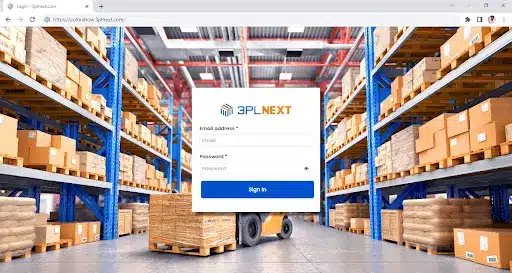How To Choose the Right 3PL Software – (An Owner’s Guide)

In the world of logistics, where every moment matters and every shipment is crucial, 3PL software is a game-changer. As a business owner, you understand that smooth logistics are vital for success. This guide is your map to understand 3PL (Third-Party Logistics) software. We’ll go deep into the details to help you find the software that will improve your operations. Let’s start this journey to unlock the full potential of 3PL software and guide your business toward new growth opportunities.
What Is 3PL Software?
3PL software, short for Third-Party Logistics software, is a specialized technology solution designed to streamline and optimize various aspects of logistics and supply chain management. It plays a critical role in helping businesses manage their inventory, transportation, warehousing, and overall logistics operations more efficiently.
At its core, 3PL software serves as a digital toolbox that allows businesses to track, manage, and optimize the movement of goods from suppliers to customers. It enables better decision-making, enhances visibility into the supply chain, and improves overall operational efficiency.
This software can encompass a range of functionalities, including warehouse management, transportation management, order processing, inventory tracking, and reporting. It is a valuable asset for companies that rely on third-party logistics providers or manage their logistics operations in-house.
Types of 3PL Software
When it comes to managing the complex world of logistics and supply chain operations, 3PL (Third-Party Logistics) software comes in various flavors. Each type serves a unique purpose and can be tailored to address specific needs. Let’s explore these three key types of 3PL software in detail:
1. Warehouse Management Systems (WMS):
Warehouse Management Systems, or WMS for short, are the go-to solution for businesses looking to streamline and optimize their warehouse operations. These systems are like the conductor of an orchestra, ensuring that everything in the warehouse runs smoothly.
Functions:
Inventory Control: WMS keeps track of every item in the warehouse. It knows how many items you have, where they are located, and when it’s time to reorder.
Order Fulfillment: WMS helps manage the entire order process, from picking items off the shelves to packing and shipping them.
Space Optimization: It helps make the best use of available storage space, reducing the need for extra storage facilities.
Real-time Tracking: You can monitor the movement of goods in real-time, enabling better decision-making.
2. Enterprise Resource Planning (ERP) Systems:
ERP systems are like the central nervous system of your business. They integrate and manage various aspects of your company’s operations, including finance, HR, and, of course, logistics.
Functions:
Integration: ERP systems bring together data from different parts of your business, providing a holistic view of operations.
Order and Inventory Management: They help manage orders, track inventory levels, and ensure stock availability.
Financial Management: ERPs handle accounting, invoicing, and financial reporting.
Procurement: They help with supplier management, procurement processes, and cost control.
3. Supply Chain Management (SCM) Suites:
SCM suites are the ultimate multitaskers in the world of logistics. They cover everything from planning and executing to monitoring and optimizing your supply chain.
Functions:
Demand Forecasting: SCM suites use data to predict future demand, helping you plan your production and inventory accordingly.
Supplier Collaboration: They enable smooth communication with suppliers, ensuring timely deliveries.
Transportation Management: They optimize transportation routes, reducing shipping costs.
Risk Management: SCM suites help identify and mitigate risks that could disrupt your supply chain.
5 Key Benefits of 3PL Software
In the world of logistics and supply chain management, 3PL (Third-Party Logistics) software stands as a powerful tool, offering several key benefits that can revolutionize your business operations. Let’s dive into the specifics of these advantages in easy-to-understand terms:
1. Automation:
Imagine having a trusty assistant who never gets tired and doesn’t make mistakes. That’s what automation does for your logistics operations when you use 3PL software.
Efficient Workflows: 3PL software automates routine tasks like order processing and inventory tracking. This means faster order fulfillment and fewer delays.
Error Reduction: When humans handle everything, errors can happen. Automation reduces the chances of mistakes in your logistics processes. For example, it can calculate shipping costs accurately every time.
Time Savings: With repetitive tasks out of the way, your team can focus on more important things, like improving customer service or finding cost-saving opportunities.
2. Reduce Errors:
Mistakes can be costly in logistics. 3PL software is your reliable partner in minimizing errors.
Accurate Inventory: It keeps track of every item in your warehouse, ensuring that you know exactly what you have in stock. This reduces the risk of overstocking or running out of essential products.
Order Accuracy: When fulfilling customer orders, 3PL software ensures the right products are picked, packed, and shipped. This leads to happier customers and fewer returns.
Data Integrity: It helps maintain accurate and up-to-date data throughout your supply chain, reducing the chances of misinformation and costly errors.
3. Flexibility:
In the ever-changing world of business, flexibility is key. 3PL software offers the adaptability your logistics operations need.
Customization: Many 3PL software solutions can be tailored to your specific needs. This means you’re not stuck with a one-size-fits-all approach.
Scalability: As your business grows, your software can grow with it. You can add more features and capabilities to meet new challenges.
Multi-Channel Support: Whether you sell in physical stores, online, or both, 3PL software can adapt to different sales channels.
4. Business Intelligence and Scalability:
3PL software isn’t just about logistics; it’s also your ticket to making smarter business decisions.
Data Insights: It collects and analyzes data from various parts of your supply chain, helping you identify trends and opportunities.
Cost Control: With detailed insights into your operations, you can identify areas where you can cut costs without compromising quality.
Growth: As your business grows, you can rely on the scalability of 3PL software to accommodate increased demand and complexity.
5. Increase Visibility Into Operations:
Having a clear view of what’s happening in your logistics is like having a pair of X-ray glasses for your business.
Real-Time Tracking: You can monitor the movement of goods, from the moment they leave the warehouse until they reach the customer. This real-time tracking enhances customer satisfaction and builds trust.
Forecasting: By knowing what’s happening now, you can make more accurate predictions about the future. This helps with inventory management and planning.
Supplier and Customer Communication: You can communicate more effectively with your suppliers and customers, keeping them informed about order status and delivery times.
6 Key Features to Look for When Selecting 3PL Software
When it comes to choosing the right 3PL software, specific features can make all the difference in streamlining your operations and boosting efficiency. Let’s explore these essential features in detail:
1. Warehouse Inventory Tracking:
Imagine having the ability to pinpoint the exact location and quantity of every item in your warehouse at any given moment. Warehouse inventory tracking is a must-have feature in 3PL software. It ensures that you can monitor stock levels accurately, reducing the risk of overstocking or running out of crucial products. With this feature, you’ll always know what’s in your warehouse and where to find it, leading to smoother order fulfillment.
2. Batch Picking:
Batch picking is like having a super-efficient shopping list for your warehouse staff. It allows you to group multiple orders together based on their common items. This feature optimizes the picking process by minimizing the time and distance warehouse workers need to travel. It’s especially valuable for high-volume operations, as it helps reduce labor costs and improve order accuracy.
3. Real-Time Order Processing:
Real-time order processing ensures that as soon as an order is placed, it’s picked up and processed without delays. This feature automates the order fulfillment process, reducing the risk of errors and ensuring prompt shipment. It enhances customer satisfaction by providing quick order confirmation and shipping notifications, giving your customers peace of mind.
4. Route Optimization for Transportation:
Efficient transportation is vital for timely and cost-effective deliveries. 3PL software with route optimization capabilities ensures that your delivery routes are the most efficient, considering factors like traffic, weather, and vehicle capacity. This feature minimizes fuel costs, reduces delivery times, and enhances the overall customer experience.
5. Advanced Reporting and Analytics:
Data is a goldmine in logistics, and advanced reporting and analytics tools in 3PL software help you tap into that resource. These features provide detailed insights into your operations, allowing you to track key performance indicators, identify trends, and make data-driven decisions. You can analyze factors like order volumes, inventory turnover, and shipping costs, enabling you to optimize your logistics processes continuously.
6. Multi-Channel Integration:
In today’s world, businesses often sell their products through multiple channels, such as e-commerce platforms, physical stores, and third-party marketplaces. Multi-channel integration in 3PL software ensures that your inventory, orders, and customer data are seamlessly synchronized across all sales channels. This feature streamlines order management prevents overselling, and provides a consistent customer experience, regardless of where the purchase originates.
Conclusion
In conclusion, the right 3PL (Third-Party Logistics) software can be your business’s secret weapon for achieving streamlined operations and enhanced efficiency in the ever-demanding world of logistics and supply chain management. By carefully considering features like warehouse inventory tracking, batch picking, real-time order processing, route optimization, advanced reporting and analytics, and multi-channel integration, you empower your business to navigate complex logistics challenges with ease. With these powerful tools at your disposal, you’re not just managing logistics; you’re paving the way for sustained growth, cost savings, and improved customer satisfaction. Choose your 3PL software wisely, and watch as it becomes the catalyst for your business’s success.




